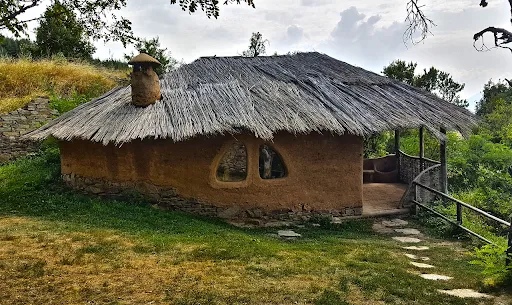In an era marked by rapid globalization, there’s a counter-movement gaining traction: localism. This movement reverberates through many spheres of our lives, from the foods we consume to the clothes we wear, and notably, the spaces we inhabit. Architectural designs, once influenced heavily by universal trends, are now witnessing a discernible shift towards incorporating local elements. Such a move is not merely an aesthetic choice; it’s a deeper reflection of the confluence of culture, economy, and environment.Â
This article studies the role local materials play in residential architecture, illustrating how homes can become embodiments of their surroundings, narrate tales of regional heritage, and at the same time, cater to contemporary needs and ecological concerns.
Table of Contents
Historical Context of Local Materials in Architecture
Throughout history, architecture has served as a tangible chronicle of human civilization, with local materials at the heart of this narrative. Ancient civilizations, from the adobe dwellings of Mesopotamia to the stone constructs of the Mayans, instinctively harnessed the resources at their disposal, giving rise to structures that were not just functional but resonated with the spirit of their times and lands. This intrinsic connection between materials, land, and people is epitomized in vernacular architecture. Rooted deeply in regional identities, vernacular designs showcase how societies have, for centuries, intuitively molded their habitats around the rhythms of their environment, creating homes that are harmoniously intertwined with their surroundings.
Advantages of Using Local Materials in Residential Architecture
The conscious choice of residential architecture firms incorporating local materials in homes comes packed with a plethora of advantages that span across environmental, economic, cultural, and functional dimensions.
1. Environmental Benefits
-
Reduction in Transportation Carbon Footprint
By sourcing materials locally, there’s a significant decrease in the distance they need to travel, thus reducing the associated carbon emissions.
-
Sustainable Resource Usage
Local materials are often renewable and can be harvested or produced with minimal strain on the environment.
-
Promotes Biodiversity
When local materials are harvested responsibly, it often supports and even enhances the local ecosystem and biodiversity.
2. Economic Benefits
-
Supports Local Industries and Artisans
Choosing local materials can bolster the local economy by providing jobs and sustaining traditional industries.
-
Affordability
Without the added costs of long-distance shipping and import duties, local materials can often be more budget-friendly.
-
Reduced Construction Costs
Fewer transportation requirements can lead to significant savings in overall construction expenses.
3. Cultural and Aesthetic Benefits
-
Reflection of Traditions
Homes built with local materials can become living monuments to regional crafts, techniques, and histories.
-
Seamless Integration with Environment
 Such homes often merge effortlessly with their surroundings, creating a sense of belonging.
-
Unique Design Possibilities
Every region has its distinctive materials, allowing for innovative, site-specific architectural wonders.
4. Functional and Durability Benefits
-
Climate Compatibility
Materials native to a region are inherently equipped to handle its climatic peculiarities.
-
Resilience and Longevity
Familiarity with local materials means they’ve stood the test of time in the region, showcasing their durability and reliability when used appropriately.
Case Studies
Clay Houses in West Africa
Indigenous communities have, for generations, harnessed the natural abundance of mud and clay. These materials not only provide a sturdy shelter but also lend the interiors a refreshing coolness, a clever indigenous response to the hot and arid climate of the region.
Bamboo Houses in South-East Asia
Journeying to South-East Asia, the ubiquitous bamboo houses stand as a testament to the adaptability and ingenuity of local architecture. Celebrated for its flexibility, incredible strength, and swift renewability, bamboo offers an eco-friendly yet durable housing solution, blending seamlessly with the tropical landscapes.
Stone Cottages in the English Countryside
The serene English countryside is dotted with quaint stone cottages, emblematic of a bygone era yet enduring in their appeal. Crafted using locally-quarried stone, these homes exude timelessness, providing both warmth in the winter and coolness in the summer, all the while standing as sturdy bulwarks against the elements.
Adobe Homes in the American Southwest
In the vast expanses of the American Southwest, one encounters the iconic adobe homes. These earthy structures, made from sun-dried earth, are not just energy-efficient, but they also encapsulate the rich cultural tapestry of the region, echoing tales of indigenous communities and early settlers alike.
The Future of Local Materials in Residential Architecture
The architectural realm stands at an exciting juncture where the past intertwines with the future. There’s a palpable resurgence in the interest for local materials, as modern design acknowledges the timeless value these materials bring. Pioneering this shift is technology, with innovations like 3D printing enabling architects to reimagine local raw materials in groundbreaking ways. Further enriching this landscape are collaborations between local artisans and contemporary architects, a confluence that brings forth designs echoing regional narratives yet fitting the global aesthetic. Underpinning all these developments is the mounting emphasis on sustainability. With the world growing ever-conscious of environmental imperatives, the spotlight on local materials only intensifies, marking them as indispensable for the green architecture of tomorrow.
As residential architecture evolves, local materials emerge not just as relics of bygone eras, but as beacons for the future, marrying sustainability with cultural resonance. By anchoring designs in regional narratives and environmental stewardship, they bridge the age-old wisdom of communities with the innovation of modern times. As we sculpt our living spaces, embracing these materials becomes a testament to our commitment to both heritage and the planet.
